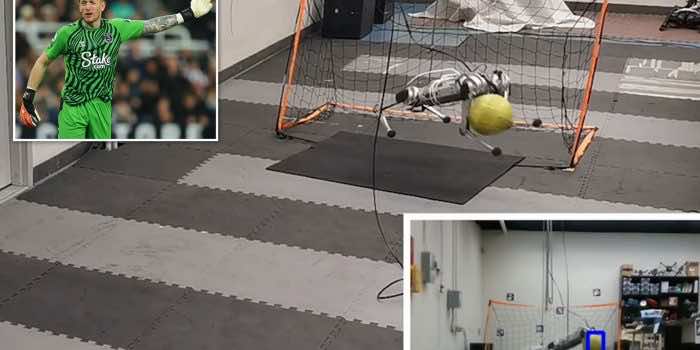Meet this goalkeeper robotic dog, christened “Mini Cheetah,” that has been developed by the Biomimetic Robotics Laboratory at MIT and has been magnificently trained by the scientists at the Hybrid Robotics Lab, University of California, Berkeley. The robot blocks the shots in such an incredible way that it has even broken the record of the goalkeepers in the Premier League. As you can see in the video below, the robot can jump, squat, and even sidestep to resist the ball from touching the net. As per the statistics revealed, the robot has an efficiency of 87.5% to block the goals, while on the other hand, human beings do the same thing with a 69% efficiency level.
Coupled with this, it should be noted that scientists have deployed the use of artificial intelligence in training this robotic dog through the use of machine learning. A phenomenon known as “reinforcement learning” has been integrated into the robot that works in the trial-and-error method. Not to mention, scientists have published the findings and all the relevant information regarding this robotic dog in a pre-print research paper with the title, “Creating a dynamic quadrupedal robotic goalkeeper with reinforcement learning.” However, the robot weighs just 20 pounds, and this lightweight plays a major role in the efficiency of its movements.

In addition to this, the researchers said, ”We present a reinforcement learning (RL) framework that enables quadrupedal robots to perform soccer goalkeeping tasks in the real world. Soccer goalkeeping using quadrupeds is a challenging problem, that combines highly dynamic locomotion with precise and fast non-prehensile object (ball) manipulation. The robot needs to react to and intercept a potentially flying ball using dynamic locomotion maneuvers in a very short amount of time, usually less than one second.”

To that end, researchers from MIT have claimed it to be the first four-legged robot that can do such amazing maneuvers and can even jog on uneven paths or terrain with twice the speed of an average human. However, according to the researchers, if the development in robotics goes at the same pace, then it would eventually compete with human soccer playing abilities and could even replace them with more efficiency. But there’s a long way to go until we see the robotic replicas of Cristiano Ronaldo and Lionel Messi on the field.


